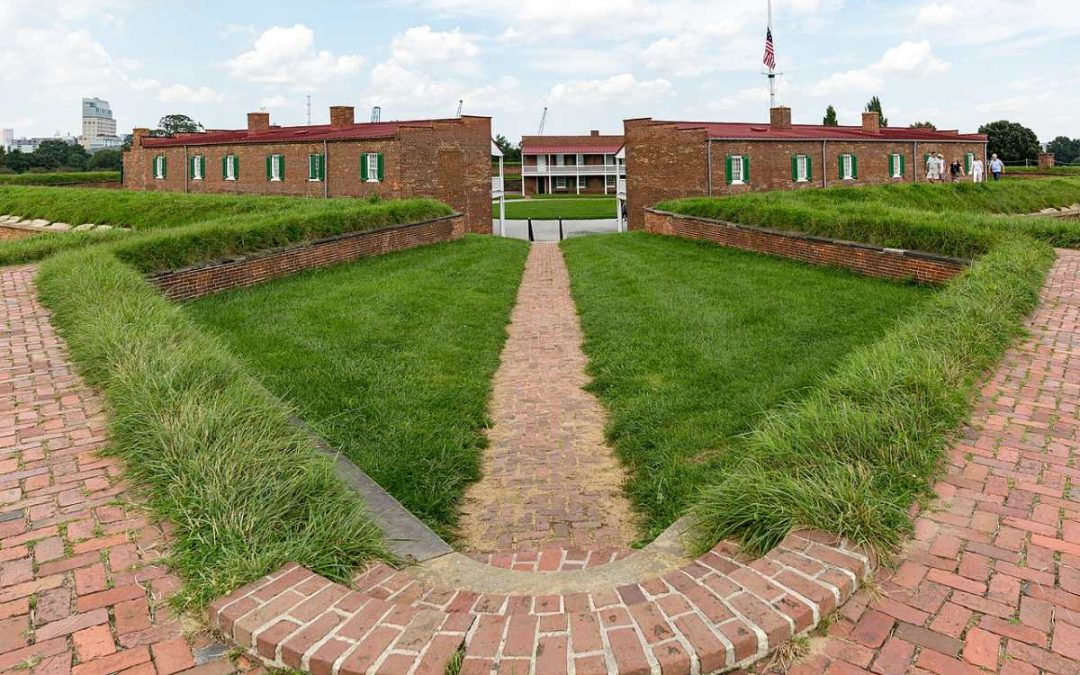Cherry blossoms gracing our state with their soft beauty and delicate hues remind us of the arrival of spring. But while these pretty, pink petals may be a welcome sight after a long and cold winter, we know it’s also time to begin preparing for the upcoming lawn care season.
Beyond admiring nature’s beauty, we’ve gathered key tips to help you kickstart a resilient and vibrant lawn. With these 8 spring lawn care tips for Maryland, you can unlock the secrets to nurturing your green yard for a season of unparalleled splendor.
In this article, we’ll cover:
- Why is Lawn Care Important in the Spring?
- 8 Spring Lawn Care Tips for Maryland
- What Are the Benefits of Spring Lawn Care in Maryland?
- FAQ About Spring Lawn Care in Maryland
Why is Lawn Care Important in the Spring?
As winter’s icy grip relinquishes its hold, the significance of spring lawn care becomes paramount. Neglecting this crucial season can reverberate throughout the year, leaving your lawn vulnerable to various problems.
Cold temperatures, snow, and ice can weaken the grass, rendering it frail and patchy. Proactive measures during spring not only promote a thriving, disease-free lawn but also bestow the allure of lush greenery – increasing property value and enhancing curb appeal.
8 Spring Lawn Care Tips for Maryland
1. Clean Up Your Yard
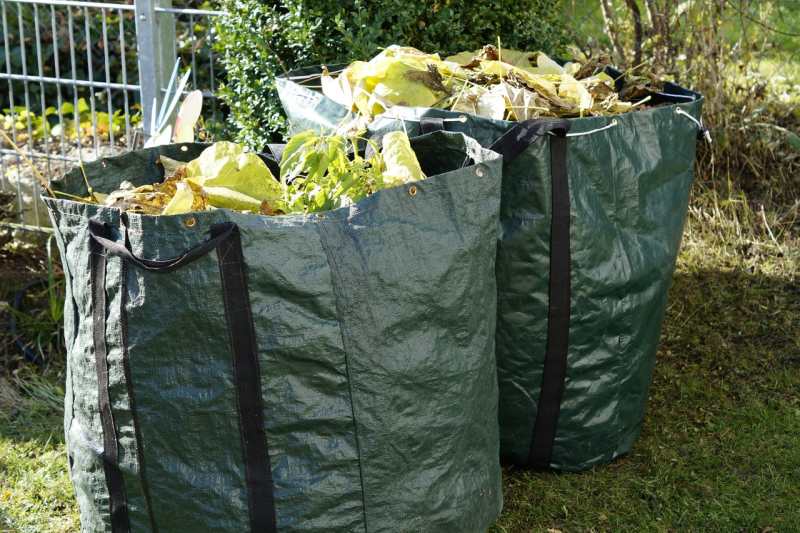
Photo Credit: PxHere
First things first, clean your yard. A lot of debris can accumulate in your yard throughout the winter, such as twigs, branches, and leaves, among other debris. Begin by gathering the large sticks and branches easily picked up by hand.
Once you’ve picked up the large items, rake out any dead grass and remaining debris. This encourages airflow to help prevent diseases and insect infestations. Starting with a clean slate also will help new grass blades to pop up without any struggle.
2. Tune Up Your Mower
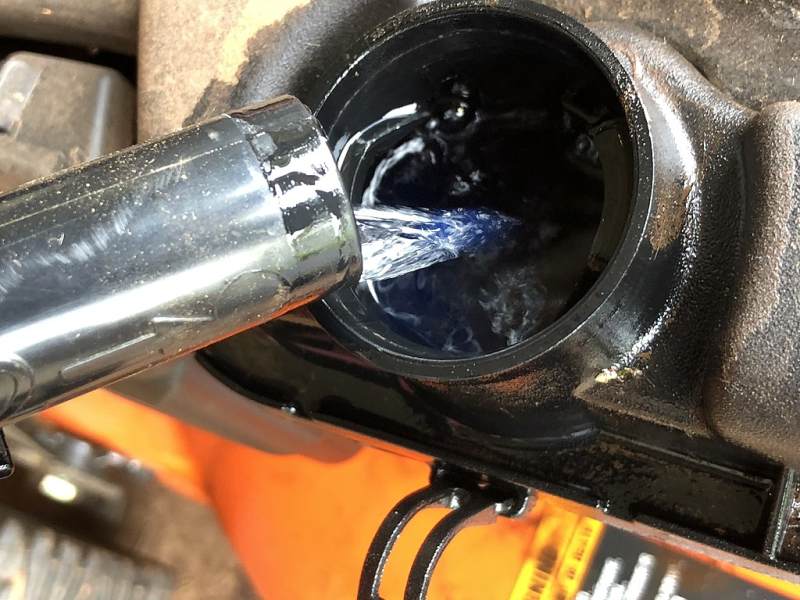
Photo Credit: Famartin / Wikimedia Commons / CC BY-SA 4.0
While it may be tempting to pull out the ol’ mower and just start mowing, hit the pause button for a moment. There are a few basic maintenance items to take care of first to ensure it’s in tip-top shape for the upcoming season.
- Give it a good cleaning. Clean out any grass clippings left over from last season.
- Take it to a professional equipment shop for a tune-up. Have it checked for any leaks or loose parts and change the spark plugs, oil, and air filters.
- Sharpen or replace the blade if it has large nicks or gouges. You always need a sharp blade because dull ones can tear the grass instead of cutting it, which can damage the plant.
- Fill it with fresh gas. Always empty the tank before storing your mower for the winter.
It can be difficult to get a cold mower to start in the spring. Set it somewhere under the sun for an hour or two before starting your mower.
3. Adjust the Soil pH
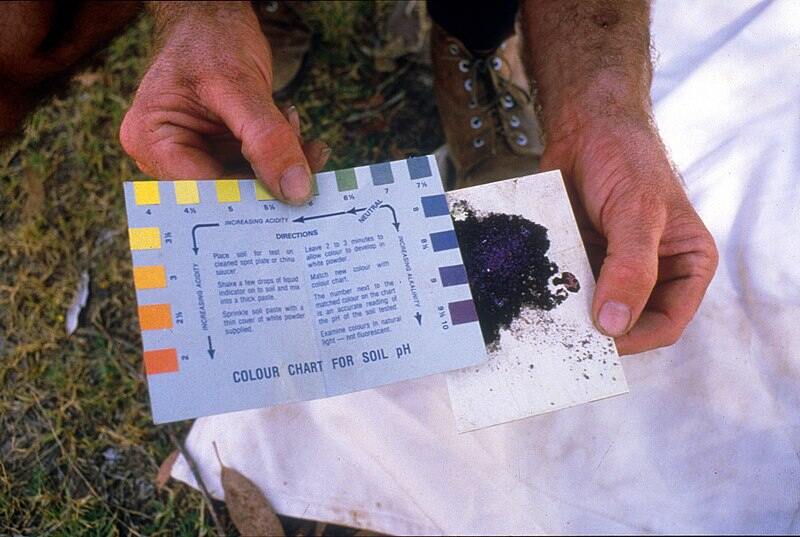
Photo Credit: CSIRO / Wikimedia Commons / CC BY 3.0
Knowing your soil’s pH is imperative for a healthy lawn. Having the ideal soil pH for your grass is one of the keys to having a healthy green carpet of grass. It plays a big part in the availability of nutrients to plant roots. Most grasses grow best with a soil pH between 5.8 and 7.2.
Test your soil with a DIY kit you can buy from your local garden center or home improvement store. Or contact your local extension office for professional testing. Test sooner rather than later to prevent problems down the road.
Maryland soil can sometimes lack proper amounts of boron, zinc, and manganese. Depending on the test results, you may need to add a few elements to balance your soil’s pH for optimal growth.
Retest your soil every year until the results are balanced. Once your soil is balanced, you will still need to test your soil every three years as soil pH changes over time. If you are sending your soil to a professional lab, be sure to use the same lab every time, as different labs have different techniques which may alter the results.
4. Fertilize for Healthy Growth
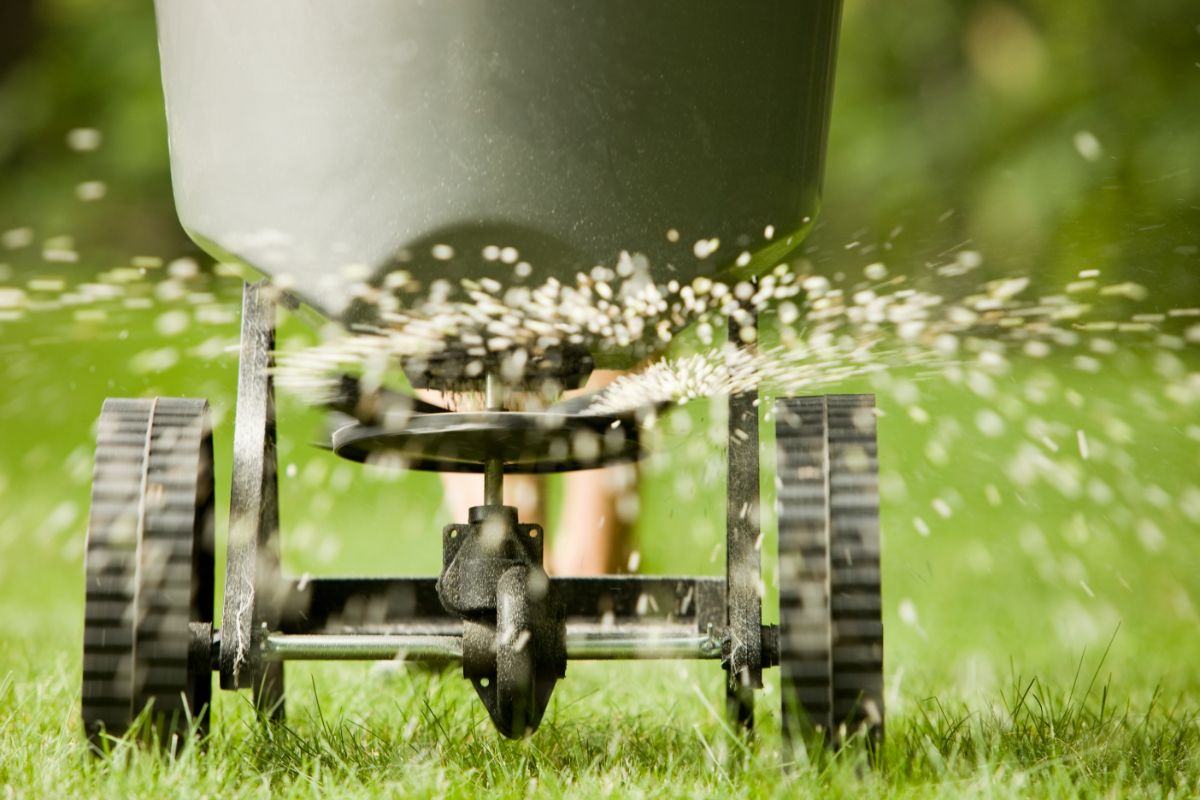
Photo Credit: BanksPhotos / Canva Pro / License
Fertilizers can help give your lawn a boost to start off the season. This is one of the most important things to do for your lawn during the spring. Fertilizers can help replenish nutrients depleted over the winter. It also will help green up your lawn and encourage strong root growth, which is vital for survival during the summer heat and drought.
Fertilization also may be necessary because grass often needs more nitrogen, phosphorus, and potassium than what is naturally found in soil. Check with your local extension or garden center for the best fertilizer for your area.
Types of fertilizer:
- Organic: This all-natural fertilizer is composed of compost or manure and will break down into the soil.
- Granular: Made from potassium nitrate and ammonium sulfate, granular fertilizer comes in a pellet form. It will continually release nutrients for one to three months and is typically cheaper than organic fertilizer.
- Water soluble: Typically ammonium-based, water-soluble fertilizers will absorb quickly into your lawn.
Note: Spring fertilization may not be necessary if you already fertilized your lawn in the fall.
5. Prevent Crabgrass and Other Weeds
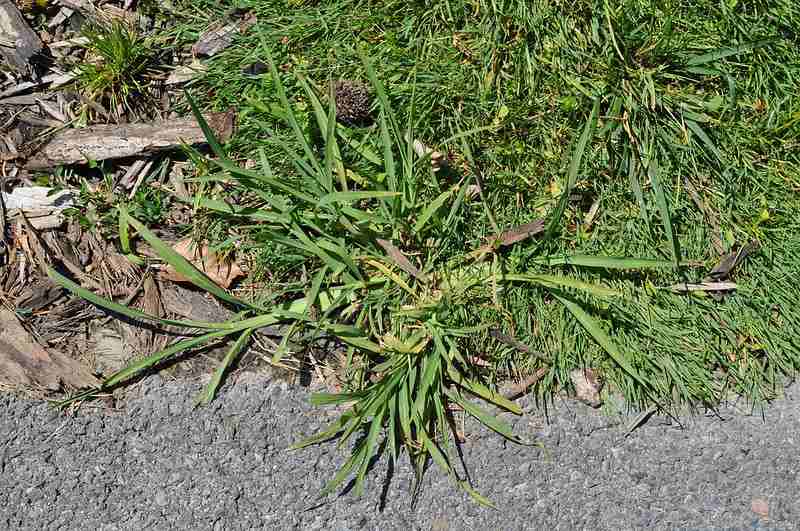
Photo Credit: NY State IPM Program at Cornell University / Flickr / CC BY 2.0
Prevention is key when it comes to crabgrass. If you don’t want this weed to overtake your lawn, you should maintain a healthy lawn and apply a pre-emergent herbicide in the early spring.
Timing is very important when applying a pre-emergent herbicide. It must be applied before soil temps reach 55 to 60 degrees Fahrenheit. Once the soil warms past 60 degrees Fahrenheit, the weed’s seeds will begin to germinate, making the pre-emergent herbicide useless.
Note: Prevention is vital since crabgrass can prove to be very difficult to eliminate once it has germinated.
6. Seed Bare and Thin Areas
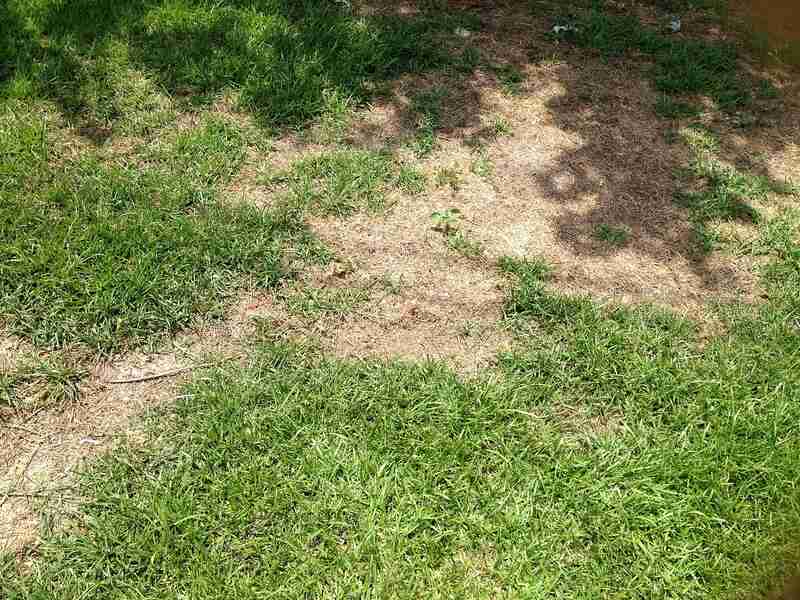
Photo Credit: Pixabay
Winter weather can be hard on lawns, so inspect your lawn closely for bare and thinning areas. Rake and seed these areas early so they grow back by summer. You will want to avoid grass seed mixtures with ryegrass. Tall fescue tends to do best in Maryland soil. And, of course, don’t forget to water these areas once you’ve seeded them.
Most common turf in Maryland:
- Tall fescue
- Fine fescue
- Bluegrass
If you have an area that doesn’t grow grass well or is fully in the sun or shade, consider planting a groundcover or tree suited for the area’s needs. You also can build a flower bed in an area not suitable for growing grass.
Note: If you are applying pre-emergent herbicide, skip applying it to these sensitive areas or choose a product that doesn’t prevent grass seed from germinating.
7. Remove Thatch Buildup
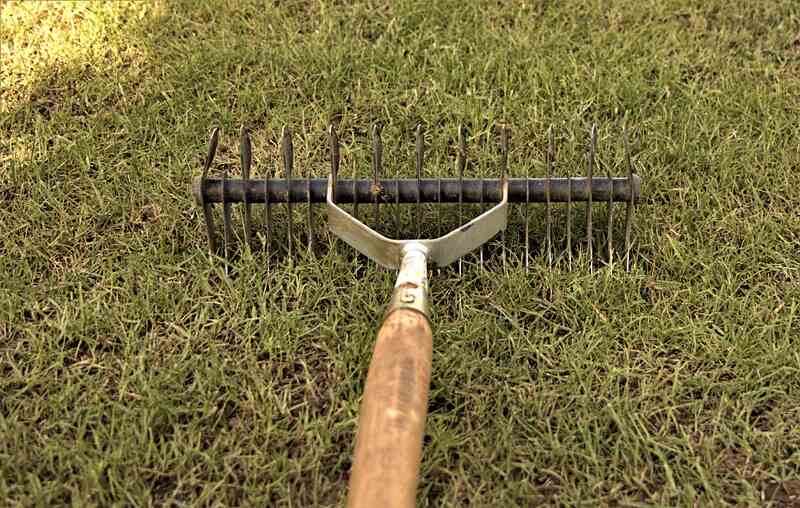
Photo Credit: Pixabay
Thatch is a layer of organic debris like grass clippings and leaves that collects between the grass roots and the soil. A thin layer of thatch can be good for your lawn since it can act as organic mulch. It can help conserve moisture and protect against soil temperature fluctuations.
But if thatch becomes too thick, it can block access to vital nutrients the soil needs. When thatch is more than an inch thick, you will need to dethatch your lawn. Thatch can build up throughout the winter, making lawn dethatching a necessary springtime chore.
8. Mow High
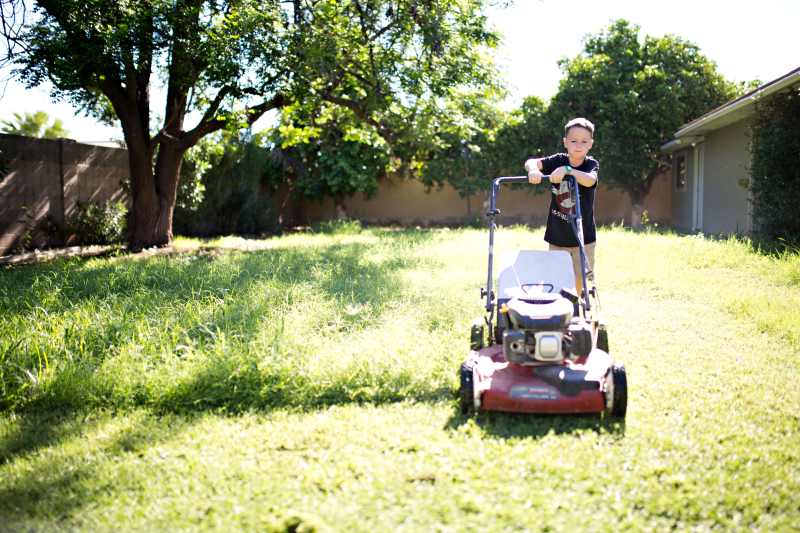
Photo Credit: Gemütlichkeit / Canva Pro / License
Keeping your grass blades longer helps your grass develop deeper, healthier roots. But remember, you will need to mow more frequently if you keep your grass longer. And always follow the one-third rule and only remove the top third of the blade.
| Grass Type | Recommended Mowing Height |
| Fine fescue | 3 – 4 inches |
| Kentucky bluegrass | 2 – 3 inches |
| Perennial ryegrass | 2 – 3 inches |
| Tall fescue | 2 – 4 inches |
| Bermudagrass | 1 – 2 inches |
| St. Augustinegrass | 2.5 – 4 inches |
| Zoysiagrass | 1 – 2.5 inches |
What Are the Benefits of Spring Lawn Care in Maryland?
As the winter’s frost recedes and nature awakens, Maryland homeowners are presented with a golden opportunity to rejuvenate their outdoor spaces through spring lawn care. Beyond aesthetics, this essential maintenance ritual provides a multitude of benefits, from bolstering environmental resilience to fostering community pride.
Central Maryland
Home to the bustling cities of Baltimore and Annapolis and the verdant landscapes of Howard County, central Maryland flourishes with ecological diversity. Engaging in spring lawn care in this region offers the following benefits:
- Water conservation: Using proper irrigation management and an efficient sprinkler system, you can reduce water waste – easing the strain on central Maryland’s water resources and promoting sustainable stewardship.
- Reduction of urban heat island effect: Regular lawn care, including mowing, aeration, and soil improvement, aids in reducing the urban heat island effect, keeping cities like Baltimore cooler during scorching summer months.
- Wildlife habitat enhancement: Implementing native plant species and creating wildlife-friendly spaces through well-managed lawns and gardens nurtures local biodiversity, attracting birds, butterflies, and pollinators.
Eastern Shore
The Eastern Shore, stretching along the Chesapeake Bay and Atlantic coast, enchants with its serene coastal beauty and rich maritime heritage. In this region, spring lawn care bestows the following advantages:
- Nutrient runoff reduction: Adhering to proper fertilization techniques and implementing best practices for managing lawn nutrients helps prevent excess runoff into waterways, safeguarding the delicate estuarine ecosystems of the Chesapeake Bay and promoting water quality preservation.
- Shoreline erosion mitigation: By maintaining healthy turfgrass and employing erosion control measures, you can help fortify the shoreline against erosion – safeguarding coastal habitats and protecting valuable properties along the Eastern Shore.
- Community engagement: Community-wide lawn care efforts, including organized clean-up events and cooperative landscaping initiatives, foster a shared sense of stewardship, strengthen social bonds, and enhance the Eastern Shore’s natural allure.
Western Maryland
The picturesque landscape of Western Maryland, with its mountainous terrain and lush forests, offers unique opportunities for spring lawn care, yielding the following benefits:
- Forest conservation: By adhering to responsible lawn care practices and reducing chemical usage, you contribute to the preservation of the region’s pristine forests.
- Fire hazard mitigation: Regular lawn maintenance, like clearing debris and implementing fire-resistant landscaping practices, helps mitigate fire risks in the region’s forested areas, protecting properties and human lives.
- Outdoor recreation enhancement: Well-maintained lawns and green spaces inspire outdoor recreation, from picnics and leisurely walks to family gatherings and sporting events – providing an immersive experience amid Western Maryland’s natural grandeur.
FAQ About Spring Lawn Care in Maryland
Early morning hours are the best time of day to water your lawn. However, watering is best on an as-needed basis, not a regular schedule. For example, it wouldn’t be wise to water your lawn after it had just rained.
We are located in a transition zone, meaning both cool and warm grasses can grow here. However, neither will grow year-round. Tall fescue grass is recommended for most areas in Maryland. However, it will need regular maintenance to maintain a healthy lawn.
Yes, absolutely. There are numerous ways to create a low-maintenance landscape, and one of the best ways is to replace all or just a part of your lawn with a grass alternative. Planting grass alternatives will help eliminate the need for regular mowing, cutting down the time needed for landscape maintenance.
Grass alternatives:
• Garden beds or borders
• Groundcovers
• Moss
• Mulches
• No-mow/natural areas
• Ornamental grasses
• Trees
Start Early For a Fabulous Lawn
If you want your yard to be the talk of the neighborhood, you’ll need to get started on your lawn care maintenance early in the spring. But don’t fret if you don’t have the time to spend taking care of your lawn.
Whether you live in Baltimore, Frederick, Ocean City, Annapolis, or one of our other amazing towns, let us help you find a lawn care pro near you that will be sure to have your lawn looking its best.
Main Photo Credit: Fort McHenry / Martin Kraft / Wikimedia Commons / CC BY-SA 4.0

